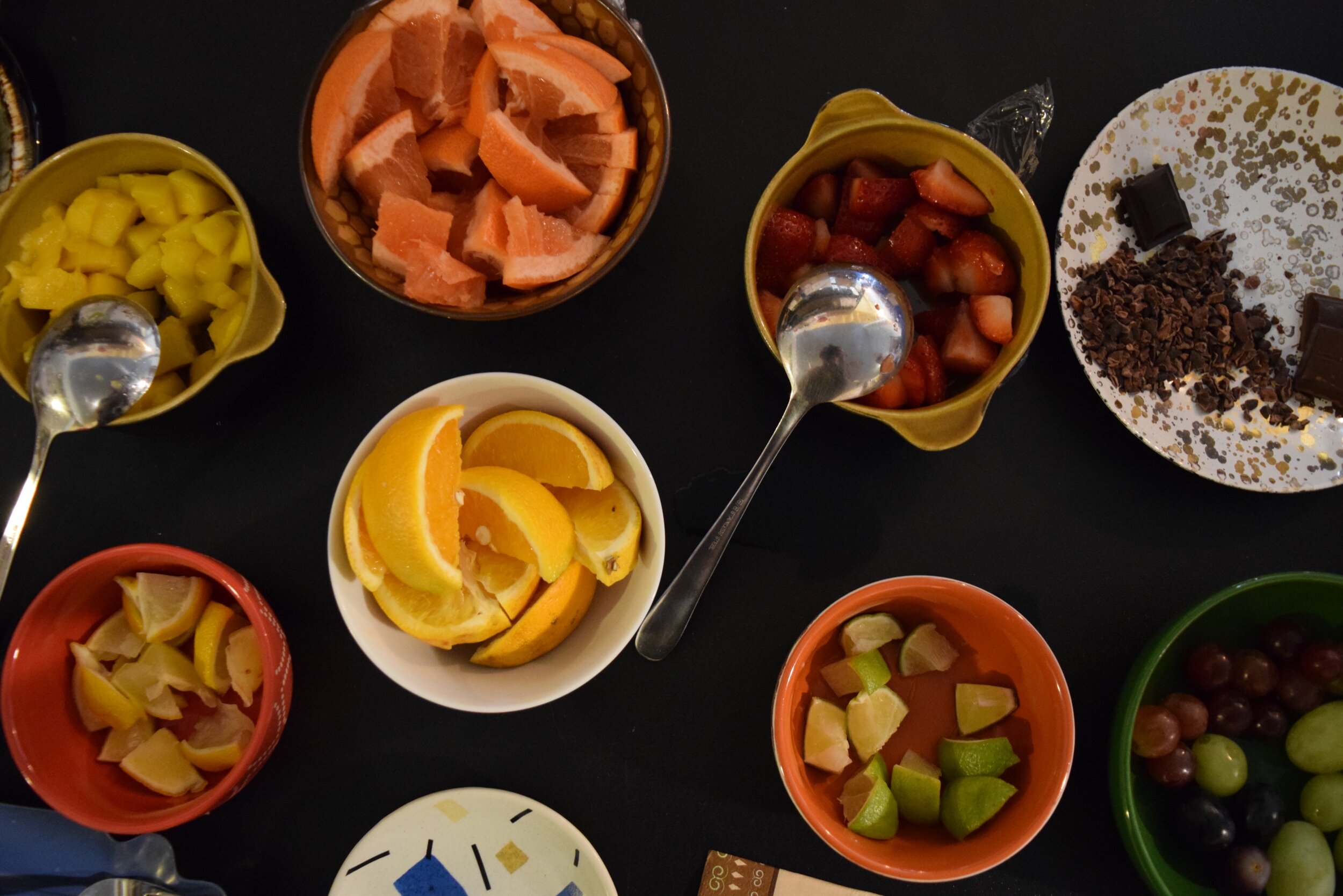Tasting Notes: Honest or Hoax?
Pear, jasmine, wood, grain, peach - do these “tasting notes” actually mean anything? The answer is actually a little more complicated than a yes or a no!
Coffee is a plant, a fruit, and a seed. Like all fruits, it contains hundreds of detectable aromatic compounds that give it its flavor and aroma. Many of these compounds can actually be found in other plants and fruits. For example, one compound called vanillin, which is abundant in - you guessed it - vanilla beans, can be found in coffee and can (depending on roast) correspond to vanilla notes in the final cup. Coffee also contains a number of acids that found in other fruit: citric acid is prevalent in citrus fruits, malic acid is found in apples, phosphoric acid is found in grapefruits, and tartaric acid is found in grapes. That's why a Central American coffee high in tartaric acid might remind you of grapes. In this sense, because coffee has a set chemical composition, there is a degree of objectivity in its taste.
Another thing that can objectively impact the flavor of coffee is how it is processed. Most coffee tend to be "washed," which means that upon harvesting, the coffee cherry is removed from the bean and washed. On the other hand, in a naturally processed coffee, thewhole fruit is left to dry for weeks before the cherry is removed. This quite literally infuses the coffee bean with fruit juice from the coffee cherry, which is why coffee from Ethiopia and East Africa (where climate is most conducive to processing natural coffee) tend to have a fruiter acidity and flavor.
On the other hand, many of the aromatic compounds themselves can be associated with very different things. For example, 3-Methylbutan-1-ol is a compound that can be found in brewed coffee.To one person it may smell floral or banana-like, while to another person it might smell like nail polish! Or another compound, Heptan-2-one, can smell like blue cheese, cinnamon, and greens. Because everyone’s lived experience, culture, and food they eat is different, these compounds might have different associations. One person might pick up that a coffee is floral, while another might pinpoint a specific flower that is dominating that floral note.
And because we’re coffee geeks, we must tell you that there is actually a certification you can get to become an official coffee taster! A person who is a certified coffee taster (or cupper) is called a Q Grader;they are to coffee as a sommelier is to wine. In order to receive a certification, a Q Grader must undergo 22 rigorous sensory and knowledge tests over the span of three days. They are trained to recognize and distinguish between different types of acids found in coffee, pick out flavor notes, determine quality, officially give coffees grades - quite literal ones - and judge national and international competitions. Because sommeliers and Q Graders have such a big influence on their respective industries, it’s important to establish a certain sense of fairness and objectivity when tasting, scoring, and grading what can sometimes seem a completely subjective topic.
If you’ve stayed with us until now and you’re wondering “What can I do to learn to taste and distinguish between coffees better? How do I learn to pick out flavor notes?” The first step is simple: eat and drink. Eat and drink BUT with intentionality! Pay extra attention to what the food and drinks smell like. How do they feel? Do they bring up flavor associations with other foods or drinks? Is there an acidity? What does it feel like? Is it zippy or mellow? It might help to take notes, too! The next step is to taste coffee: taste it frequently, and preferably alongside other coffee. You might notice that there are differences, but you might not be able to put them into words yet, and that’s ok. Take whatever notes you can and continue being conscious of everything you eat and drink, and before you realize it, you’ll find yourself picking out jasmine and cherry notes in your cup, complete with an opinion on the finish, whether clean or lingering.
After that, you may want to participate in a coffee cupping at your local coffee roaster. While we miss the pre-COVID days of free public cuppings ("First Fridays" at Penstock!), we still believe this is an awesome way to grow in knowledge and build community over coffee! Stay tuned as we navigate the next season and what it might look like to taste coffee together.



